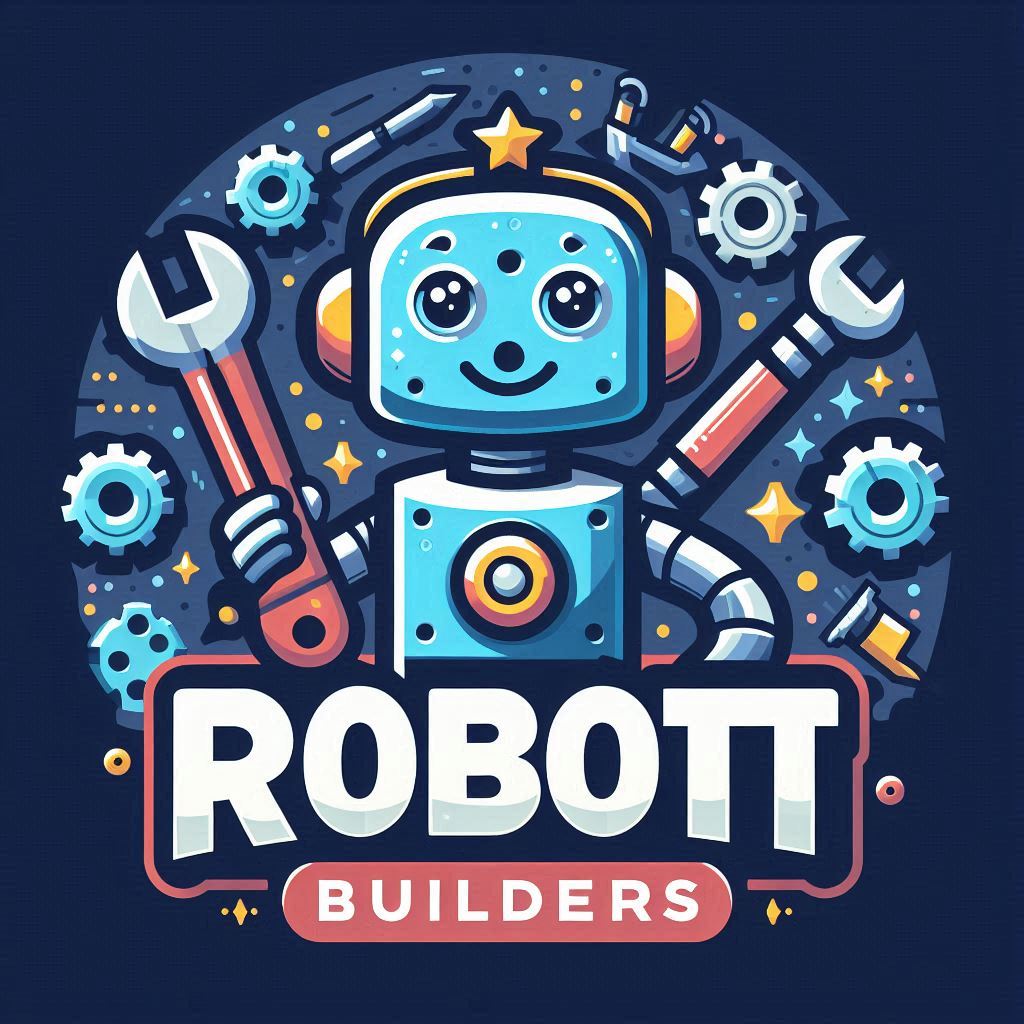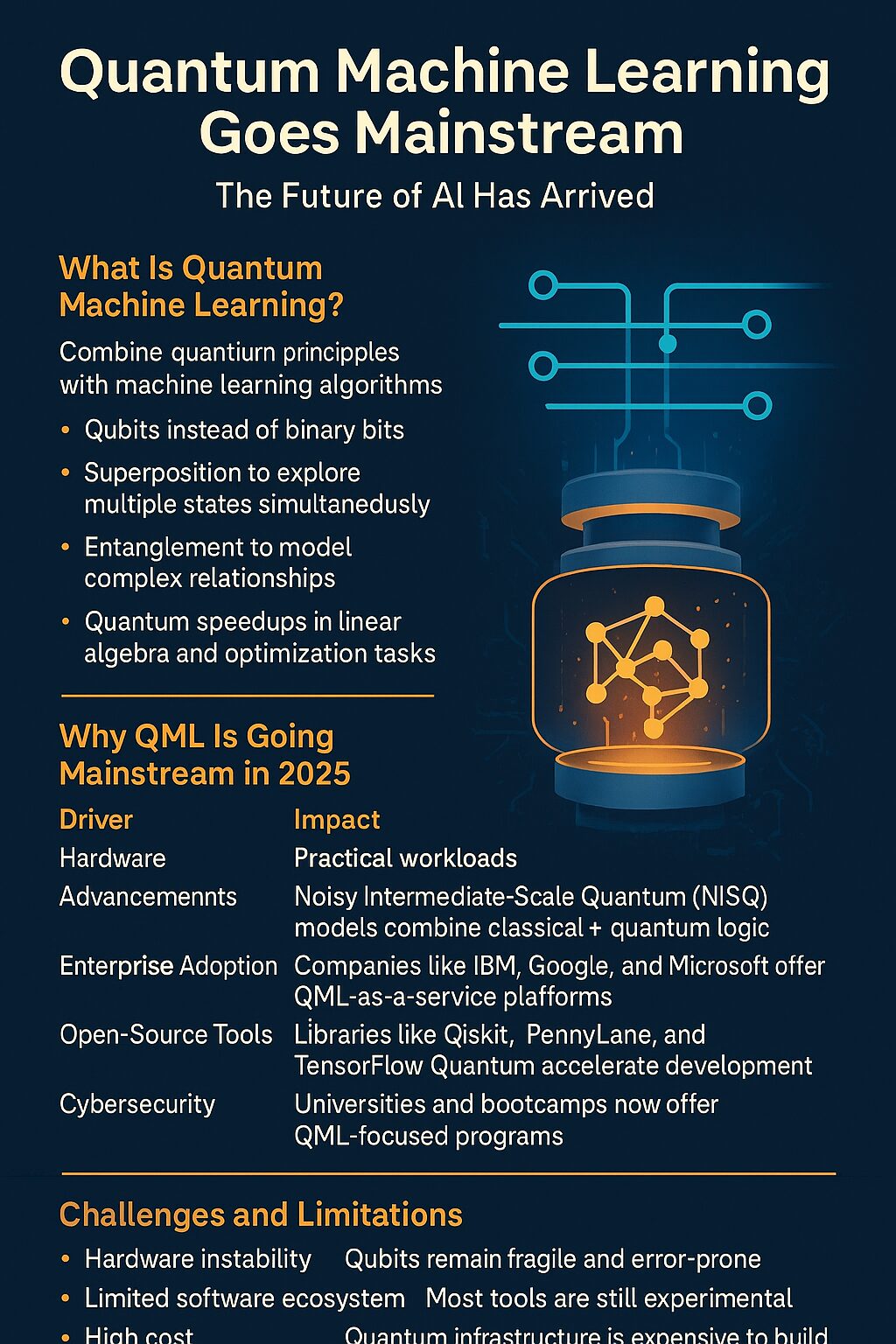Introduction
In 2025, Quantum Machine Learning (QML) has officially crossed the threshold from theory to practice. Once confined to academic labs and niche simulations, QML is now powering real-world applications in finance, drug discovery, climate modeling, and cybersecurity. As quantum computing hardware matures and hybrid algorithms evolve, businesses and researchers are embracing QML as the next frontier in intelligent systems.
This article explores how QML works, why it matters, and what its mainstream adoption means for the future of artificial intelligence.
🧠 What Is Quantum Machine Learning?
Quantum Machine Learning combines the principles of quantum computing with machine learning algorithms to solve complex problems faster and more efficiently than classical systems. It leverages:
- Qubits instead of binary bits
- Superposition to explore multiple states simultaneously
- Entanglement to model complex relationships
- Quantum speedups in linear algebra and optimization tasks
QML is not a replacement for classical AI—it’s an enhancement that unlocks new possibilities in high-dimensional data analysis.
🚀 Why QML Is Going Mainstream in 2025
| Driver | Impact |
|---|---|
| Hardware Advancements | Quantum processors now exceed 1,000 qubits, enabling practical workloads |
| Hybrid Algorithms | Noisy Intermediate-Scale Quantum (NISQ) models combine classical + quantum logic |
| Enterprise Adoption | Companies like IBM, Google, and Microsoft offer QML-as-a-service platforms |
| Open-Source Tools | Libraries like Qiskit, PennyLane, and TensorFlow Quantum accelerate development |
| Talent Growth | Universities and bootcamps now offer QML-focused programs |
These trends are converging to make QML accessible, scalable, and commercially viable.
🔬 Real-World Applications of QML
Quantum Machine Learning is already transforming key industries:
- 🧬 Pharmaceuticals: Accelerates molecular simulations for drug discovery
- 💰 Finance: Enhances portfolio optimization and fraud detection
- 🌍 Climate Science: Models complex systems for weather prediction and carbon tracking
- 🔐 Cybersecurity: Detects anomalies in encrypted data streams
- 🧠 Neuroscience: Simulates brain networks with quantum graph models
These use cases demonstrate QML’s potential to solve problems that classical AI struggles with.
⚖️ Challenges and Limitations
Despite its promise, QML faces hurdles:
- Hardware instability: Qubits remain fragile and error-prone
- Limited software ecosystem: Most tools are still experimental
- High cost: Quantum infrastructure is expensive to build and maintain
- Talent shortage: Few engineers are trained in both quantum physics and machine learning
However, ongoing research and investment are rapidly closing these gaps.
📈 SEO Tips for QML Content Creators
✅ Search-Friendly Titles
- “Quantum Machine Learning in 2025: What You Need to Know”
- “QML vs Classical AI: Key Differences Explained”
✅ High-Impact Keywords
- “quantum machine learning applications”
- “QML algorithms 2025”
- “quantum AI vs classical AI”
✅ Metadata Optimization
- Alt Text: “Quantum processor powering machine learning algorithms”
- Tags: #QuantumMachineLearning #QML2025 #QuantumAI #AIInnovation #QuantumComputing
Conclusion
Quantum Machine Learning is no longer a futuristic concept—it’s a strategic reality. As quantum hardware stabilizes and hybrid models mature, QML is poised to redefine how we build intelligent systems.

